A scalable solver for planetary dynamo simulations
Faculty: Binod Sreenivasan (CEaS), Konduri Aditya (CDS)
The magnetic fields of planets are thought to be generated by dynamo action in their turbulent fluid
cores. Numerical simulations performed on massively parallel computers have successfully captured
several observable features of planetary magnetic fields. Binod Sreenivasan’s research at the Centre for
Earth Sciences (CEaS), IISc, focuses on planetary magnetism. Three-dimensional fluid dynamical
models of Earth and planetary cores provide insights into the processes that generate and sustain their
time-varying fields over billions of years. Recent work at CEaS has explained why planetary fields are
predominantly dipolar and how polarity transitions occur [Refs. 1,2]. Konduri Aditya’s research at the
Department of Computational Data Sciences, IISc, aims at developing novel scalable algorithms for
coupled partial differential equations (PDEs) on massively parallel architectures. The dynamo problem
considered in this project involves the simultaneous solution of the equations of momentum, magnetic
field and temperature/composition in a spherical shell geometry that mimics a planetary core.
The proposed Ph.D. project will aim to develop efficient numerical algorithms on heterogeneous
parallel systems to solve the coupled PDE system of a planetary dynamo described above. As
applicable, machine learning methods for acceleration of the flow solver will be considered. Following
this, the project will utilize the developed solver to simulate the rapidly rotating strongly driven
parameter space in which the dynamo is thought to operate. Once this parameter space is reached, the
mantle control of Earth’s dynamo and the resulting anisotropy of the inner core will be examined. An
impactful outcome of the project would be the comparison of the field generated in our model with the
observed evolution of the Earth/planetary field.
The PhD student should have a good background in mathematics and a strong aptitude for scientific
computing. Knowledge of fluid dynamics and numerical solutions of PDEs will be an advantage. The
student will have access to the HPC machines in SERC, IISc.
Expected learning outcomes and skills from PhD project:
- Strong foundations in numerical solutions of partial differential equations.
- Developing algorithms and programming for parallel architectures.
- Foundations in fluid dynamics and turbulence.
- Machine learning for scientific computing/PDE solvers.
- Data analysis and visualization.
For informal enquiries, contact Konduri Aditya (konduriadi@iisc.ac.in) or Binod Sreenivasan
(bsreeni@iisc.ac.in)
References:
- A. Varma and B. Sreenivasan, The role of slow magnetostrophic waves in the formation of the axial dipole in planetary dynamos, Physics of the Earth and Planetary Interiors, v333, 106944, 2022.
- D. Majumder, B. Sreenivasan and G. Maurya, Self-similarity of the dipole–multipole transition in rapidly rotating dynamos, J. Fluid Mech., v980, A30, 2024
